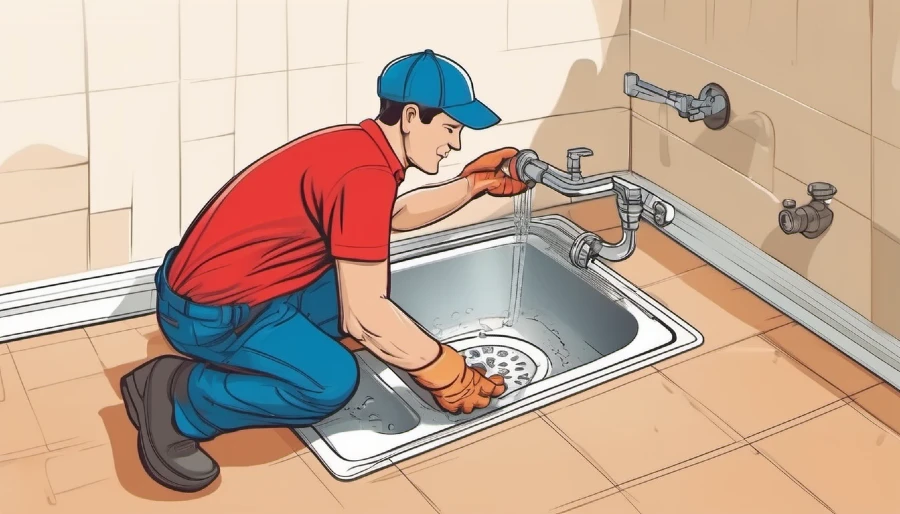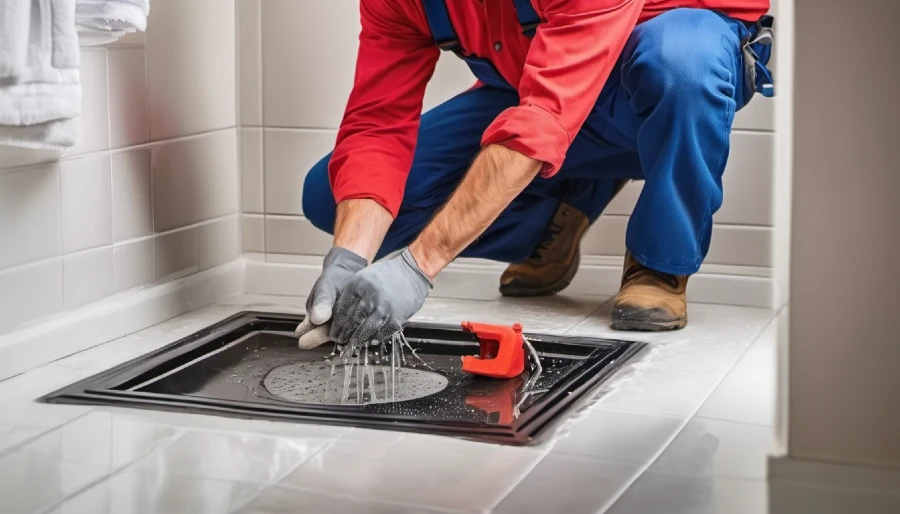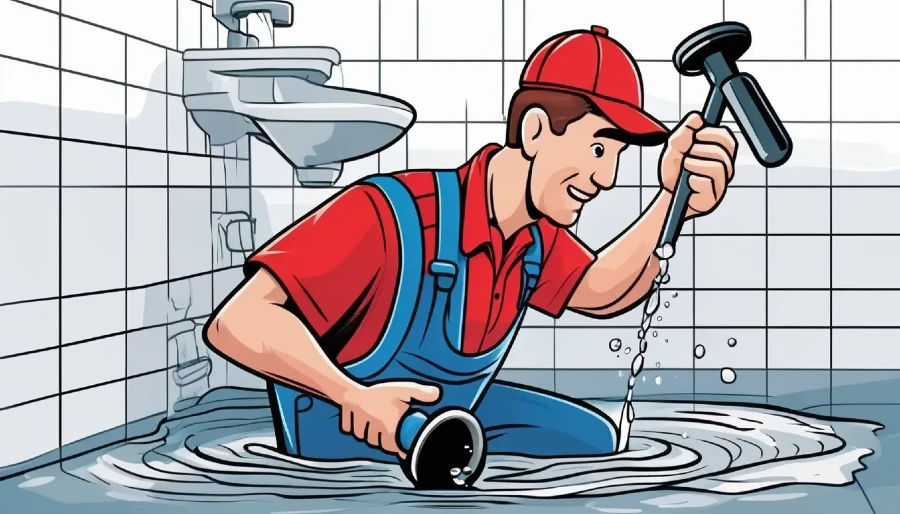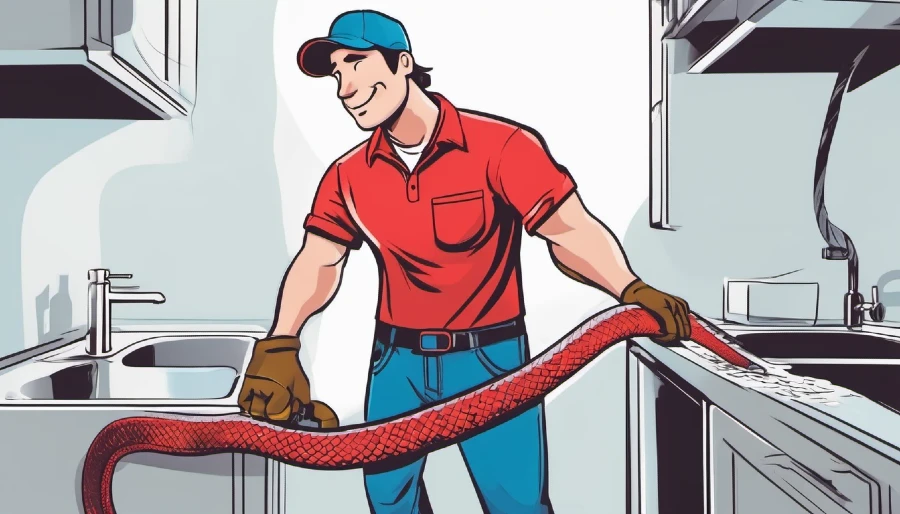Effective Solutions for Clogged Shower Drains
Shower drain backing up, or is your shower drain clogged? A clogged shower drain can be a real nuisance. It can disrupt your daily routine and make your bathroom less pleasant to use. However, there is no need to worry. This guide is here to help you tackle that stubborn clog.
We’ll walk you through various effective methods to clean out your shower drain and restore its functionality. From simple DIY solutions to professional help, we’ve got you covered. We’ll also provide tips on how to prevent your shower drain from clogging up in the future. So, let’s dive in and get that water flowing smoothly again.
Understanding Clogged Shower Drains
Clogged shower drains are a common issue in many households. Understanding the root causes is the first step to prevention and solution. A clogging shower drain mostly results from built up debris. Hair, soap scum, and mineral deposits are typical culprits. These materials can combine, forming a stubborn blockage over time. Often, this buildup happens gradually, unnoticed until water drainage slows or stops.
In some cases, a clog deeper in the pipes or the sewer line causes the problem. Identifying the clog’s nature can help you select the best approach for clearing it. Being informed equips you with the tools needed to maintain a functional and clean shower drain.
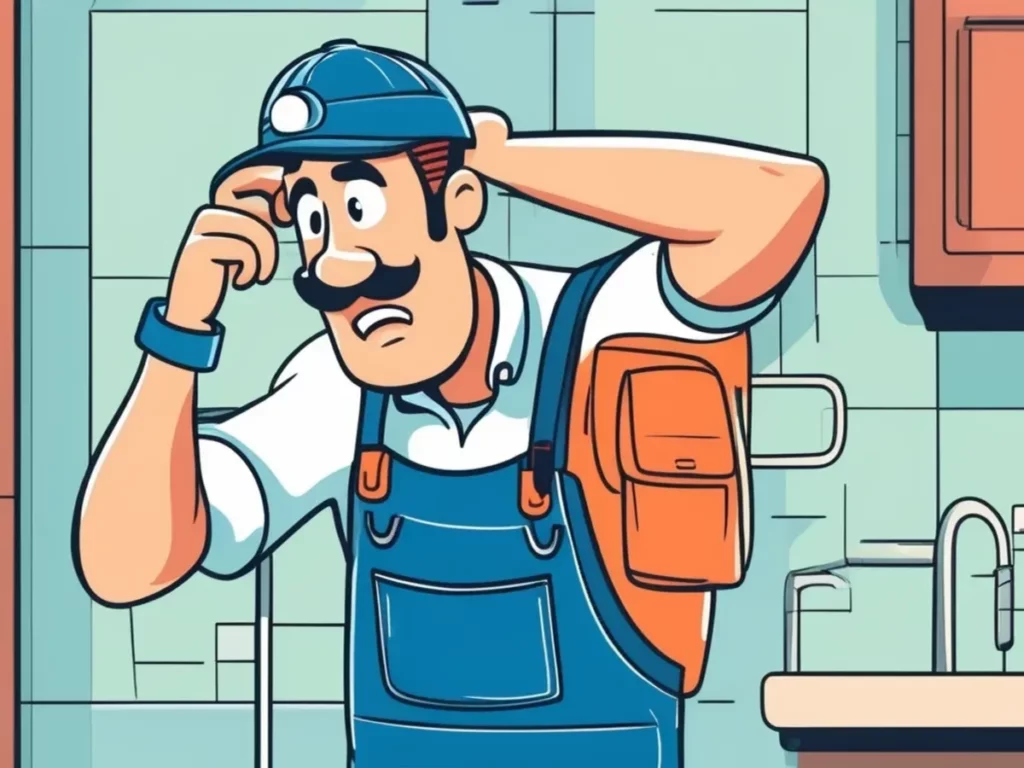
Common Causes of Clogs
Understanding what clogs your drain is essential. Various materials contribute to a blocked drain. Here are common causes:
- Hair: It easily collects and tangles into knots.
- Soap Scum: Solidifies and sticks to pipe walls.
- Mineral Buildup: Hard water leaves mineral deposits.
By knowing these causes, you can act to prevent future issues.
The Anatomy of a Shower Drain
A shower drain isn’t as simple as it seems. Knowing its structure helps in identifying where clogs might form. The drain has a cover preventing larger debris from entering. Beneath, water travels through the P-trap, a U-shaped pipe crucial in trapping debris and preventing sewer gases. Further down, pipes lead to the main sewer line. Understanding these parts can pinpoint where blockages occur, aiding in choosing the right unclogging method.
Initial Steps: How to Clear Shower Drain
Wondering about how to clean out shower drain? Starting with simple fixes is often effective. Begin by assessing the visible aspects of the drain. Identifying and removing loose debris can improve water flow. Tools are not always necessary at this stage. Using natural methods like hot water is beneficial. It can dissolve some types of buildup without harsh chemicals. Applying these initial steps saves time and effort. Addressing issues early on can stop minor ones from turning into major problems.
Clearing Visible Blockages
First, inspect the drain cover for any apparent debris. Often, hair and soap scum accumulate here. Remove the cover and use a glove or small tool to clear blockages by hand. Ensure you pull out any loose hair and residue. This simple action can significantly improve the flow of water. If the issue persists, consider further methods on how to fix a clogged shower drain.
Using Boiling Water
Boiling water is a natural way to clear a clogged shower drain. Heat helps dissolve soap scum and grease. Pour a pot of boiling water slowly down the drain. Do this in batches to avoid splashing. If water begins draining, repeat the process. Boiling water may not work for severe clogs, but it’s a good start.
Mechanical Methods to Remove Clogs
When clogs are more stubborn, mechanical methods can help. These techniques involve using tools to dislodge blockages. Employing the right tool makes a difference. Simple devices like a plunger or a drain snake can work wonders. These methods provide more direct pressure on clogs. It’s crucial to use them correctly to avoid damage. Effective mechanical methods can restore normal water flow. When natural methods fail, these tools are often successful.
Using a Plunger
A plunger can often clear a clogged shower drain effectively. It’s a simple yet powerful tool for blockages. Start by placing the plunger over the drain. Ensure there’s enough water to cover the plunger cup. Apply firm and steady pressure. This action creates a vacuum, which can dislodge the clog.
Utilizing a Drain Snake
For deeper blockages, consider a drain snake. This tool is ideal for reaching stubborn clogs. Insert the snake into the drain carefully. Twist and push it to catch the debris blocking the pipe. Once you feel resistance, gently pull the snake out. This should remove hair and buildup from deep within.
Natural Solutions for Clogged Drains
Natural solutions are often safer for your pipes and the environment. They use simple ingredients found at home. These methods can effectively tackle many types of clogs. They also reduce reliance on harsh chemicals. One popular natural remedy involves baking soda and vinegar. This combination can break down minor blockages. These methods are not only eco-friendly but often cost-effective. They are ideal for regular maintenance and prevention. Natural solutions work best when used regularly. They help keep your drains clear and functional.
Baking Soda and Vinegar Method
Baking soda and vinegar form a powerful duo. Together, they can clear minor clogs in your shower drain. Start by pouring a cup of baking soda down the drain. Follow this with a cup of vinegar. The mixture will fizz, breaking down debris and grime. Let it sit for about 15 minutes before rinsing with hot water.
Enzymatic Drain Cleaners
Enzymatic cleaners are a gentler option for clogs. They use beneficial bacteria to break down organic matter. These cleaners digest proteins and fats, unclogging drains naturally. They are safe for pipes and the environment. Enzymatic cleaners may take longer to work. However, they provide a safer, chemical-free alternative for maintaining clear drains.
Chemical Drain Cleaners: A Last Resort
Chemical cleaners should be reserved for stubborn clogs. These powerful agents can dissolve tough blockages quickly. However, they come with potential drawbacks. These products can harm your pipes over time. Frequent use may lead to pipe corrosion or damage. For this reason, they should be a last-ditch solution. When using chemical cleaners, always follow the instructions. Use gloves and protective eyewear to avoid injury. Safety should be your top priority when handling these substances.
When to Call a Professional
Occasionally, doing it yourself doesn’t suffice. If clogs persist despite your efforts, you may need a plumber. Professionals have the tools and experience to tackle tough jobs. Ignoring severe clogs can lead to bigger problems. Don’t let a simple issue escalate into major pipe damage. Timely intervention can save you money and stress. For ongoing blockages, getting professional assistance can ensure the issue is completely taken care of. They can also provide insights on preventing future issues.
Signs of Severe Blockages
Certain signs indicate a significant clog. If water backs up frequently, this could signal a deep blockage. Gurgling noises in pipes are also a red flag. Slow drainage over several fixtures may point to a systemic issue. Likewise, persistent unpleasant odors need attention. These can indicate trapped debris or sludge buildup. Also, repeated unsuccessful attempts to clear a drain suggest it’s time for expert help. Don’t hesitate to call a professional when the problem continues.
Finding a Reputable Plumber
Finding a skilled plumber requires some research. Start by checking online reviews and ratings. Customer feedback offers valuable insights into service quality. It’s wise to ask friends or neighbors for recommendations. Personal experiences can lead you to reliable, trustworthy professionals. Word of mouth often proves invaluable. Verify that your chosen plumber is licensed and insured. Credentials ensure the plumber is qualified to solve your problem safely and effectively. Proper certification is essential.
Preventing Future Clogs
Prevention is key to keeping your shower drain clog-free. Regular attention can help avoid major issues. Simple practices make a significant difference in maintenance. One effective method is keeping the drain free of debris. Removing any visible hair and soap residue can help. Consider making this part of your routine. Proper bathroom ventilation also plays a role. It reduces moisture and prevents soap scum buildup. Keep your bathroom fan running during and after showers for the best results. Lastly, routine checks can help catch issues early. Inspect for signs of slow drainage or odd sounds. Addressing minor problems quickly avoids bigger complications.
Regular Maintenance and Cleaning
Routine maintenance ensures a smoothly functioning drain. Consistency is critical in keeping blockages at bay. A few simple habits can extend your drain’s life. Start by establishing a cleaning schedule. Try to clean the drain cover weekly. This prevents hair and grime from collecting and obstructing flow. Install a bathroom fan to reduce moisture, ultimately lowering soap scum buildup risk. Inspect the drain regularly to detect and address slow drainage before it escalates.
- Clean drain cover weekly to prevent buildup.
- Use baking soda and vinegar monthly for cleaning.
- Regularly check for signs of slow drainage.
Installing a Hair Catcher
One of the best investments for a clear drain is a hair catcher. This simple device blocks hair before it enters the drain. It’s a preventative measure that’s easy to install. Choose a hair catcher that fits snugly over your drain. Some designs rest on top, while others secure beneath the drain cover. Select based on what fits with your bathroom fixtures. Installing a hair catcher reduces the amount of debris entering your plumbing. It also simplifies cleaning, making hair removal quick and easy. This small step significantly mitigates clog risks.
Conclusion and Maintenance Tips
Maintaining a clear shower drain requires ongoing effort. Consistent care helps avoid inconvenient and costly blockages. Simple steps can protect your bathroom’s plumbing over time. Regular monitoring of water flow is important. Be alert to any changes in drainage speed. Quick action can prevent minor problems from becoming severe. By implementing preventative measures, you ensure efficient water flow. Small changes like using a hair catcher or choosing less soapy products are impactful. These efforts protect your plumbing system long term. Consistency in maintenance can save time and money. A bit of prevention is better than dealing with major issues. Prioritize these tasks to maintain a functioning bathroom.
Regular Maintenance Checklist
A checklist keeps maintenance tasks organized and consistent. Having a routine ensures you don’t overlook key steps. Here’s a straightforward guide:
- Inspect and clean the drain weekly.
- Pour boiling water down the drain monthly.
- Use baking soda and vinegar every couple of months.
By following these steps, you maintain a clean, efficient shower drain. Checklists make essential tasks easier and help develop a habit, leading to an effective maintenance routine.
FAQ Section
Many questions arise about clogged shower drains. Recognizing frequent problems can help in solving and preventing them. Here are answers to frequently asked questions.
- What causes shower drains to clog? Hair, soap scum, and mineral buildup are primary culprits. Regular cleaning helps minimize these causes.
- Can I prevent my shower drain from clogging? Yes, a hair catcher and regular cleaning are effective methods. Preventative steps reduce future clogs.
- When should I call a plumber? Call a plumber if DIY methods fail or when the drain repeatedly clogs. Persistent problems often need professional attention.
Sources and additional information: Home Depot, Good Housekeeping, HGTV, Bungalow, Reddit, Quora, Sawmillcreek, Four Generations One Roof, YouTube

